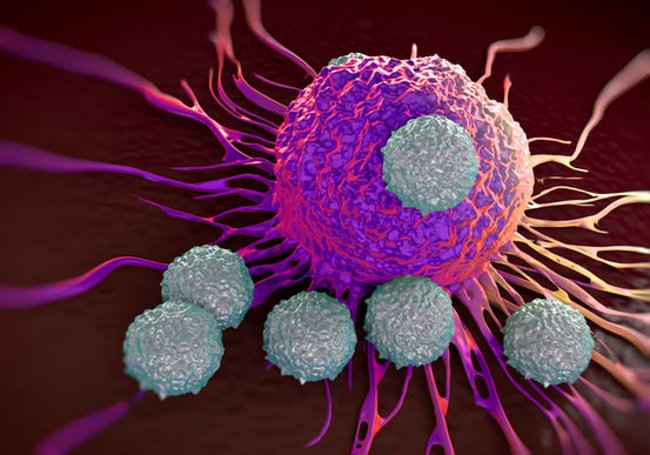6 strange facts about leprosy you may not know yet
Leprosy ( Leprosy or "leprosy" ) is a chronic systemic infection caused by the bacilli. Leprosy can cause symptoms of paralysis of the legs, arms and legs, and loss of sensation on the skin, especially in the hands and feet. However, the current reality is that the disease is less extreme and completely treatable.
 Photo source: National Museum of Health and Medicine / Contributed by Major Buker OSG [Office of the Surgeon General]
Photo source: National Museum of Health and Medicine / Contributed by Major Buker OSG [Office of the Surgeon General]
Recently, leprosy is also called Hansen 's disease , it is caused by bacteriophage bacteria ( Mycobacterium leprae ) - non-hairless acid-resistant bacteria without shells, which do not produce spores, can be located separately but often in bundles parallel or in clusters. The disease causes skin damage and permanent nerve damage, but there is a misconception that causes paralysis of parts of the human body.
Here are 6 strange facts about leprosy that you may not know.
1. In the US there are still many cases of leprosy
 Photo source: Kent Weakley / Shutterstock.com
Photo source: Kent Weakley / Shutterstock.com
Although leprosy is often thought to be an " ancient " disease , people in the world can still be infected and infected. In September 2016, there was a case of leprosy reported to be a student in California and a few cases appeared each year in the southern United States , including Florida, Louisiana and Texas.
According to the US National Hansen's Disease (Leprosy) Program ( NHDP ), " In 2014 alone, there were 175 cases of leprosy in the United States. Normally, there are about 150 to 200 cases of disease each year. room ".
2. The leprosy is completely curable
 Photo source: Nenov Brothers Images / Shutterstock.com
Photo source: Nenov Brothers Images / Shutterstock.com
Isolation immediately after diagnosis of leprosy can " destroy " the patient. However, now this evil monster disease can be easily treated with a combination of antibiotics.
" However, this treatment will take a long time to" finish ": Patients diagnosed with leprosy may need to take antibiotics for about 6 months to two years " - according to Trung. CDC's Centers for Disease Control and Prevention (CCC ) said.
According to NHDP , when patients start taking antibiotics to treat leprosy, they may not spread the bacteria to others for several days. Because antibiotics quickly kill most bacteria that cause leprosy and a few remaining bacteria are not enough to infect others. But if the treatment process stops too early, these bacteria can continue to infect as often.
" Deadly bacterial infections may exist in the body a few years after treatment ends and dead bacteria do not pose a risk of re-infection " - NHDP said.
3. Tatu species can get leprosy
 Photo source: Arto Hakola / Shutterstock.com
Photo source: Arto Hakola / Shutterstock.com
The reason why the leprosy cases are more common in some parts of the world - is because of a defined animal living in those areas. " Nine-banded armadillos " ( dasypus novemcinctus ) - a mammal that has a thick outer shell, also known as a tatu .
In fact, the armadillo animal is the medium containing the bacteria that causes leprosy - the cause of leprosy and transmission of bacteria to humans. Researchers believe that humans have transmitted leprosy to armadillo animals for about 500 years, and a study from 2011 confirmed that armadillo could infect humans.
However, lovers of other animals do not need to be too scared because the armadillo is just another animal other than humans - known to be leprosy.
4. Most people are immune to leprosy
 Photo source: royaltystockphoto.com/Shutterstock.com
Photo source: royaltystockphoto.com/Shutterstock.com
Yes, leprosy is an infectious disease - people can become infected if they " breathe " in the bacteria. However, one of the reasons unpopular leprosy is "an estimated 95% of people are immune to leprosy " - NHDP announced.
5. There is still a "leprosy colony" in the United States .
 Photo source: J. Stephen Conn / flickr.
Photo source: J. Stephen Conn / flickr.
. But people with leprosy are no longer forced to live there.
" From 1866 to 1969, people with leprosy were transferred to Hawaii's Kalaupapa peninsula, located on Molokai Island " - according to the National Park Service ( NPS ). Today that area is a national park.
" Over hundreds of years, more than 8,000 people, mostly Hawaiians, have died in Kalaupapa " - NPS said. " Although people with leprosy have been free to leave that area since 1969, there are still many people who stay because it is their homeland " - according to CNN. " Leprosy patients still live there despite being cured " - according to NPS.
" As of September 2015, 16 patients with Hansen's disease still live in the Kalaupapa Peninsula " - CNN reported.
6. Current leprosy is not the same as what is written in the Bible
 Photo source: Bjoern Wylezich / Shutterstock.com
Photo source: Bjoern Wylezich / Shutterstock.com
Although leprosy is also mentioned in the Bible, the references are not exactly what people with leprosy currently experience.
" Instead, the word" leprosy "mentioned in the Bible is translated from a Hebrew word in Hebrew, so it only means" dirty. " For people, clothes or even buildings, " said Nepal Leprosy Trust .
When these words appear in the Bible in the reference section for everyone, it appears to refer to skin diseases.
NHDP also notes that Hansen's disease is not " the Old Testament leprosy ".
You should read it
- Simple way to have a home health checkup in just 1 minute
- 10 signs appear on the body of health warning you should not be ignored
- 7 indicators for you to check your health better than BMI
- Soaking rice overnight can reduce the risk of heart disease and cancer
- Signs on your face help identify your health
- The 25 interesting facts about HEART may not be known to you
- Extremely creative room ideas around the world
- Signs to identify your liver early
May be interested
- Top 10 'disorder' diseases are stigmatized in the world today
 people with disorders often feel unwell, uncomfortable physically, mentally and socially. here are the top 10 disorders that are often stigmatized in the world today.
people with disorders often feel unwell, uncomfortable physically, mentally and socially. here are the top 10 disorders that are often stigmatized in the world today. - 10 strange and interesting facts about the universe you may not have heard of
 here are 10 interesting facts about the universe that humans have observed, deduced and summarized after thousands of years of astronomical research.
here are 10 interesting facts about the universe that humans have observed, deduced and summarized after thousands of years of astronomical research. - 6 historical facts that surprise you
 here are 6 unexpected historical facts that can cause you to completely lose the concept of time.
here are 6 unexpected historical facts that can cause you to completely lose the concept of time. - Amazing facts about snow
 the belief that no two snowflakes are alike is a myth. here are some interesting facts about snow that will surprise you.
the belief that no two snowflakes are alike is a myth. here are some interesting facts about snow that will surprise you. - Interesting facts that can change the way you see the world
 these little-known fun facts are sure to change the way you see the world. from historical trivia to far-flung wonders, they're perfect for sparking curiosity and enriching conversation.
these little-known fun facts are sure to change the way you see the world. from historical trivia to far-flung wonders, they're perfect for sparking curiosity and enriching conversation. - 10 interesting facts about the Earth you may not know
 earth - our 'green house' always contains strange and interesting stories that not everyone can know as a year with 365.2564 days rather than 365 days or earth turning around. the shaft takes only 23 hours, 56 minutes and 4 seconds.
earth - our 'green house' always contains strange and interesting stories that not everyone can know as a year with 365.2564 days rather than 365 days or earth turning around. the shaft takes only 23 hours, 56 minutes and 4 seconds. - 21 things you may not know about Microsoft & Bill Gates
 both of these names are inherently famous and nothing strange to us. however, i'm sure there will still be some interesting facts that you don't know about microsoft & bill gates, let's see what those facts are!
both of these names are inherently famous and nothing strange to us. however, i'm sure there will still be some interesting facts that you don't know about microsoft & bill gates, let's see what those facts are! - 21 'weird' photos are real that you can't believe your eyes
 let's tipsmake.com admire 21 strange photos that really make you can't believe your eyes below!
let's tipsmake.com admire 21 strange photos that really make you can't believe your eyes below! - 12 interesting facts about food that everyone should know
 invite you to consult 12 interesting facts about food that everyone should know in the article below!
invite you to consult 12 interesting facts about food that everyone should know in the article below! - 6 interesting facts about AI you may not know
 the popularity of artificial intelligence in our daily lives has increased dramatically. now, we see ai technology in phones, cybersecurity, and cars.
the popularity of artificial intelligence in our daily lives has increased dramatically. now, we see ai technology in phones, cybersecurity, and cars.










 Folding Markies - the most comfortable camping 'tent' today
Folding Markies - the most comfortable camping 'tent' today Perfectly label with the most magical 'light' bridge on the earth
Perfectly label with the most magical 'light' bridge on the earth The new experiment shows that drinking a beer makes you happier and friendlier
The new experiment shows that drinking a beer makes you happier and friendlier How is the American pilot trained to survive when the plane falls?
How is the American pilot trained to survive when the plane falls? Why are humans the most violent primates?
Why are humans the most violent primates? Getting the light to stop, an important step to making quantum computers
Getting the light to stop, an important step to making quantum computers